Eggplants are a popular vegetable in many cuisines around the world. They are a versatile ingredient that can be roasted, grilled, fried, or baked. However, before you can enjoy the delicious fruit of the eggplant, you need to understand its growth stages. In this article, I will guide you through the Eggplant Growth Stages, from seed germination to harvesting.
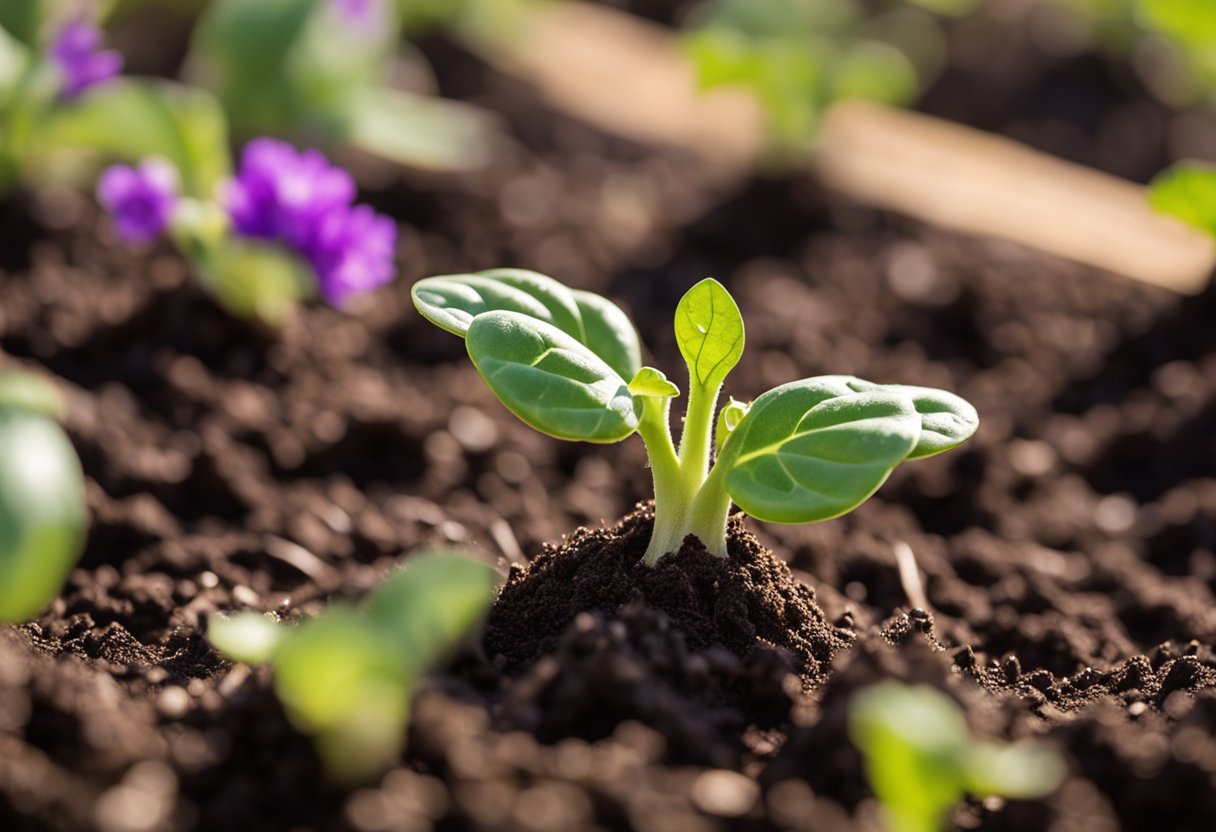
Eggplants come in many varieties, each with its unique growth characteristics. Some varieties mature faster than others, and plants will grow fastest under ideal conditions. Understanding the different eggplant varieties and their growth stages is essential to cultivating healthy and productive plants. In this article, I will provide you with a comprehensive guide to the growth stages of eggplants, including seed germination, seedling development, vegetative growth, flowering stage, fruit set, and harvesting.
Key Takeaways:
- Eggplants come in many varieties, and understanding the differences in their growth characteristics is essential to cultivating healthy and productive plants.
- The growth stages of eggplants include seed germination, seedling development, vegetative growth, flowering stage, fruit set, and harvesting.
- Proper pest and disease management and post-harvest handling are essential for ensuring a successful eggplant harvest.
Eggplant Varieties
There are many different varieties of eggplants, each with unique shapes, sizes, and colors. Here are some of the most common eggplant varieties:
Black Beauty
This is the most common eggplant variety in the United States. Black Beauty eggplants are large, oval-shaped, and have a dark purple skin that is almost black. They are great for grilling, roasting, and frying.
Japanese
Japanese eggplants are long and slender, with a dark purple skin that is thinner than other varieties. They have a sweet and mild flavor and are perfect for stir-frying and grilling.
Rosa Bianca
Rosa Bianca eggplants have a round shape and a light purple and white skin. They have a creamy texture and a sweet flavor that makes them perfect for roasting and grilling.
White Eggplant
White eggplants have a round shape and a white skin. They have a mild flavor and a tender texture that makes them perfect for grilling and roasting.
List of Eggplant Varieties
Here’s a list of other eggplant varieties you might come across:
- Italian
- Indian
- Thai
- Chinese
- Turkish
- Globe
- Sicilian
Each eggplant variety has its unique taste and texture. You can experiment with different varieties to find the one that suits your taste buds the best.
Seed Germination
Growing eggplants from seeds is a great way to start your garden. Here are some important things to keep in mind when germinating eggplant seeds:
Temperature Requirements
Eggplant seeds require warm soil to germinate, with temperatures between 60-95 degrees F. (15-35 C.). If you are starting your seeds indoors, it is important to keep them in a warm and well-lit area. You can use a heat mat to help maintain the temperature, and a grow light to provide adequate light.
Soil Preparation
Before planting your eggplant seeds, it is important to prepare the soil properly. Eggplants prefer well-draining, fertile soil with a pH between 5.5 and 7.0. You can mix in compost or other organic matter to improve soil quality. It is also important to ensure that the soil is free of any weeds or debris that could interfere with seed germination.
Watering Practices
When watering your eggplant seeds, it is important to keep the soil moist but not waterlogged. Overwatering can lead to damping off, a fungal disease that can kill young seedlings. It is also important to avoid overhead watering, which can cause the seeds to rot. Instead, use a watering can or hose to water the soil directly.
By following these guidelines, you can ensure successful germination of your eggplant seeds and get your garden off to a great start.
Seedling Development
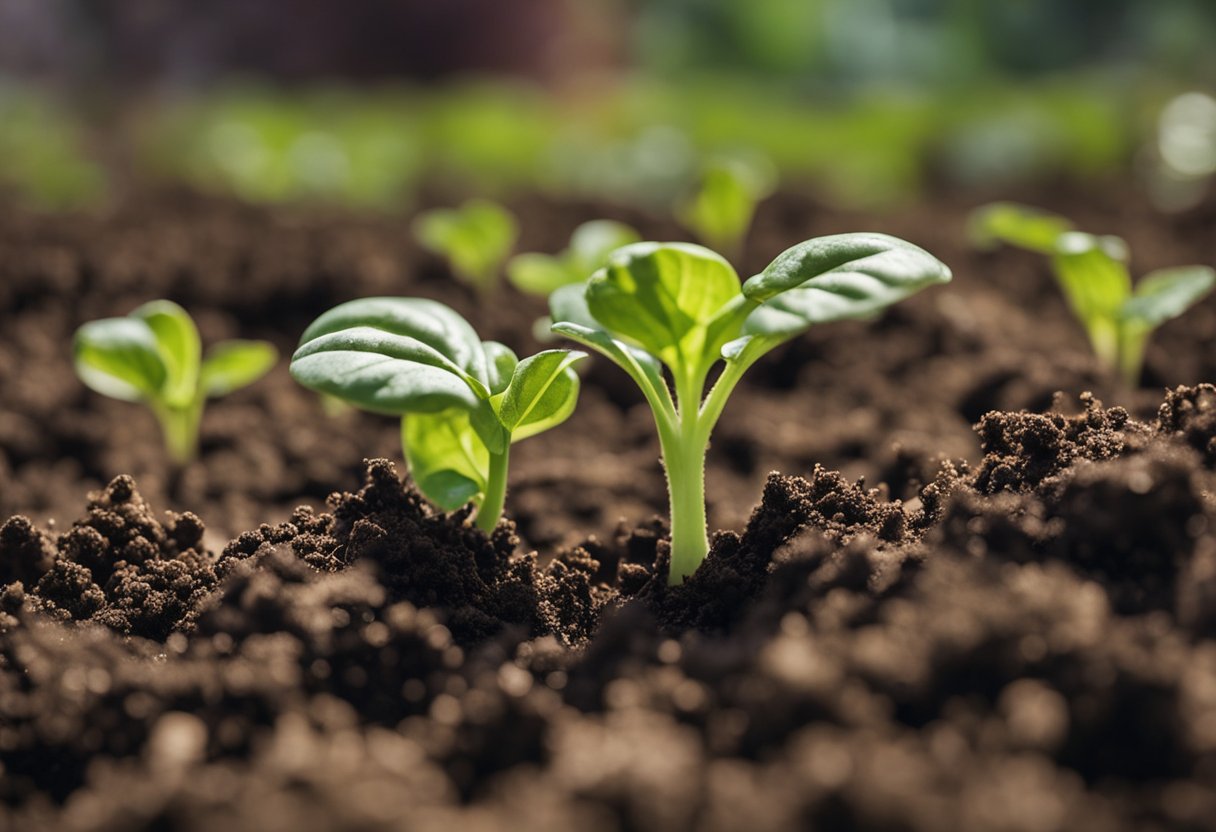
After the eggplant seeds have germinated, the next stage of development is the seedling stage. During this stage, the seedlings will grow and develop their first true leaves. Here are some important aspects to consider during the seedling development stage:
Light Exposure
Light is crucial for the growth and development of eggplant seedlings. They require at least 12-14 hours of light per day. If you are growing eggplant seedlings indoors, it is important to provide them with adequate light. You can use fluorescent lights or LED grow lights to provide the necessary light for your seedlings. It is also important to keep the light source close to the seedlings to prevent them from becoming too leggy.
Fertilization
Eggplant seedlings require regular fertilization to promote healthy growth. You can use a balanced fertilizer with equal amounts of nitrogen, phosphorus, and potassium. It is important to follow the manufacturer’s instructions when applying fertilizer to avoid over-fertilization, which can damage the seedlings.
Thinning Procedures
When the seedlings have grown their first true leaves, it is important to thin them out to avoid overcrowding. Overcrowded seedlings can lead to stunted growth and poor development. You can thin out the seedlings by removing the weaker seedlings and leaving only the strongest ones. It is also important to provide adequate spacing between the seedlings to allow for proper growth and development.
The seedling development stage is a crucial stage in the growth and development of eggplant. Providing adequate light, fertilization, and thinning procedures can help promote healthy growth and development of the seedlings.
Vegetative Growth
During the vegetative growth stage of eggplants, the plant produces its main stem and leaves. This stage is crucial for the plant’s overall health and growth, and it is important to ensure that the plant receives the necessary nutrients and care.
Stem Formation
At the beginning of the vegetative growth stage, the eggplant seedling will produce its main stem. The stem will continue to grow and thicken as the plant matures. It is important to provide the plant with support, such as a stake or trellis, to prevent the stem from bending or breaking under the weight of the fruit.
Leaf Growth
As the stem grows, the eggplant will produce its first set of true leaves. These leaves will be larger and more developed than the initial seed leaves. The plant will continue to produce more leaves as it grows, and it is important to ensure that the plant receives enough water and nutrients to support leaf growth.
During the vegetative growth stage, it is important to monitor the plant for any signs of pests or diseases. Common pests that can affect eggplants include aphids, flea beetles, and spider mites. Diseases such as verticillium wilt and bacterial wilt can also affect the plant’s growth.
The vegetative growth stage is a critical time for the eggplant plant. By providing the plant with the necessary care and attention, it can grow strong and healthy, setting the stage for a successful harvest.
Flowering Stage
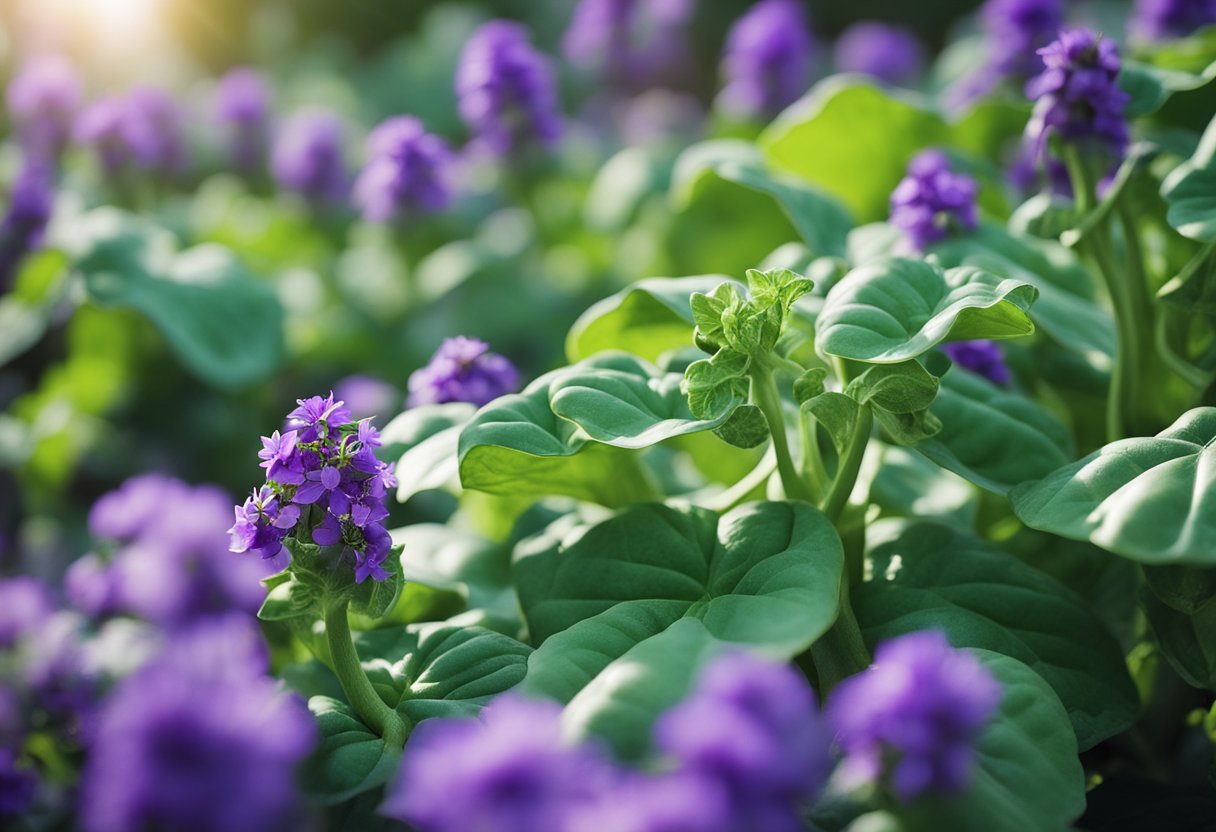
The flowering stage is a critical stage in the growth of eggplants. During this stage, the eggplant plant produces flowers which later turn into fruits. The flowering stage is the fourth stage in the growth of eggplants, following the seed germination, true leaves appearance, and more leaves and stems growth stages.
Pollination
Pollination is the process by which the pollen from the male flower is transferred to the female flower to fertilize the eggplant plant. Pollination is critical for the eggplant plant to produce fruits. The eggplant plant is a self-pollinating plant, meaning that it can pollinate itself. However, it is also possible for the plant to be cross-pollinated by insects such as bees, butterflies, and moths.
Bud Formation
After pollination, the eggplant plant forms buds which later develop into fruits. The buds are usually green in color and can be found at the base of the flowers. The buds take a few days to develop into fruits, and during this time, the eggplant plant requires adequate water and nutrients to ensure proper fruit development.
The flowering stage is a critical stage in the growth of eggplants, and it is during this stage that the plant produces flowers which later turn into fruits. Pollination and bud formation are two critical processes that occur during the flowering stage, and they are essential for the eggplant plant to produce healthy and delicious fruits.
Fruit Set
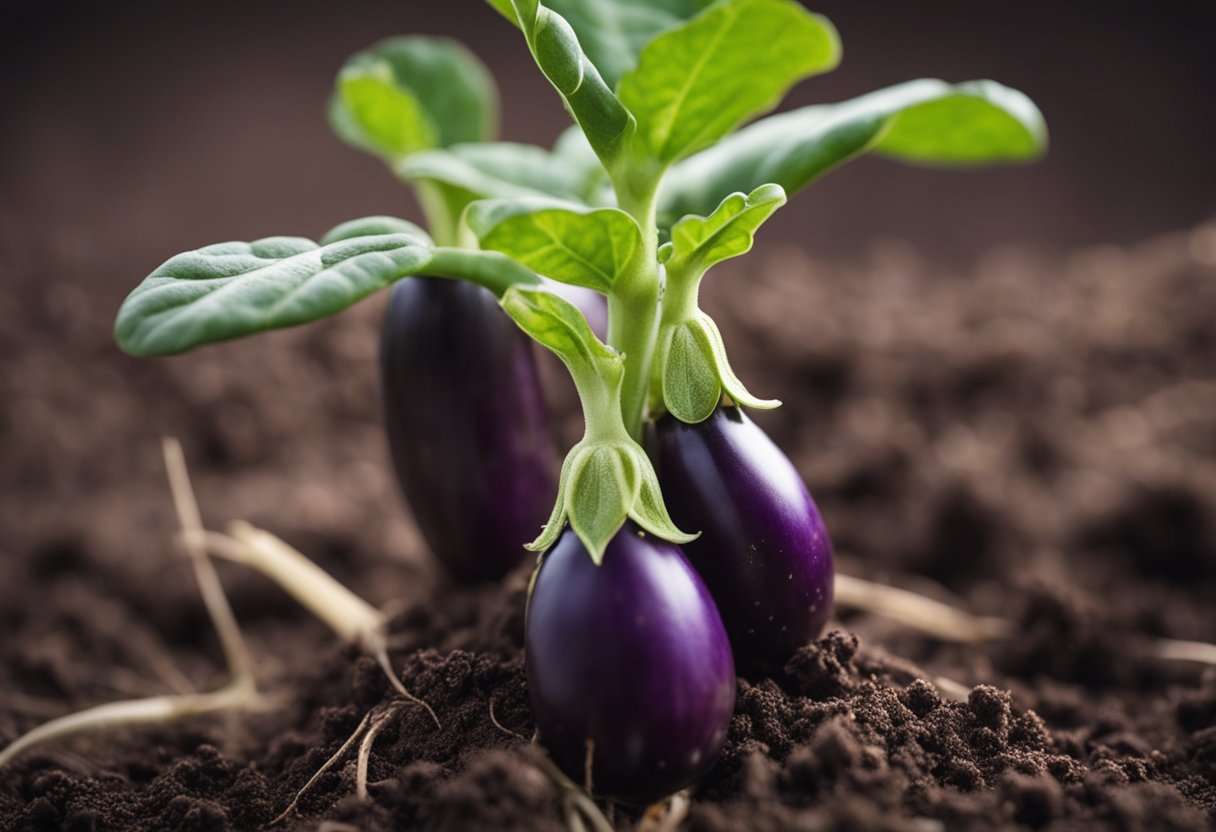
Fruit set is the stage where the eggplant flowers are pollinated and the fruit begins to develop. It is a crucial stage in the growth of eggplants, as it determines the yield and quality of the crop.
Fruit Development
After pollination, the eggplant fruit begins to develop. The fruit grows in size and changes color from green to purple. At this stage, it is important to provide adequate water and nutrients to ensure healthy fruit development. Eggplants require consistent moisture to prevent fruit cracking and to promote even growth.
Fruit Maturation
As the eggplant fruit matures, it reaches its full size and develops a shiny, smooth skin. The fruit is ready for harvest when it is firm and has a deep purple color. Overripe eggplants will have a dull color and a soft texture. It is important to harvest the fruit at the right time to ensure the best quality and flavor.
During the fruit set stage, it is important to monitor the plants for pests and diseases. Aphids, spider mites, and whiteflies are common pests that can damage the fruit and reduce the yield. Fungal diseases such as powdery mildew and verticillium wilt can also affect the plant’s growth and fruit production.
To prevent these issues, it is important to maintain good cultural practices such as crop rotation, proper spacing, and pruning. Additionally, organic insecticides and fungicides can be used to control pests and diseases.
The fruit set stage is a critical period in the growth of eggplants. Proper care and management during this stage can ensure healthy fruit development and a bountiful harvest.
Harvesting
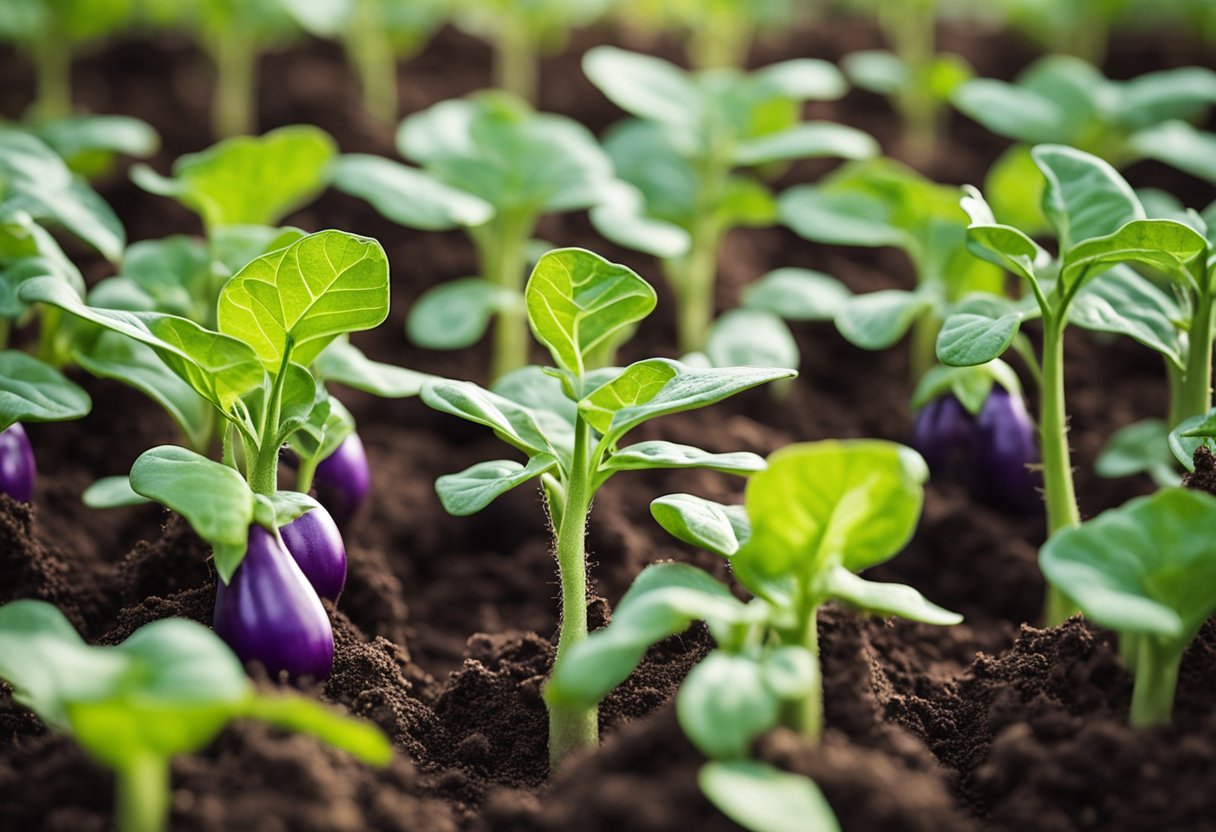
Harvest Time
I usually harvest my eggplants when they are firm, glossy, and have reached their mature size. It’s important to pick them before they become overripe and start to lose their flavor and texture. The ideal harvest time for eggplants is when they are between 6-8 inches in length and have a diameter of around 2-3 inches. The color of the eggplant should be consistent and uniform. If the eggplant is overripe, it will have a dull appearance and may have brown spots on the skin.
Harvest Methods
There are two main methods for harvesting eggplants: using a knife or pruning shears. To use a knife, gently twist the eggplant off the plant and cut the stem with a sharp knife. Be careful not to damage the plant or the surrounding fruit. If you prefer using pruning shears, cut the stem about an inch above the fruit. This method is especially useful when harvesting multiple eggplants at once.
It’s important to handle the eggplants gently during the harvesting process to avoid bruising or damaging the fruit. Once harvested, the eggplants can be stored in a cool, dry place for up to a week. If you plan to use them later, it’s best to refrigerate them in a plastic bag to keep them fresh. Remember, the fresher the eggplant, the better the flavor!
Post-Harvest Handling
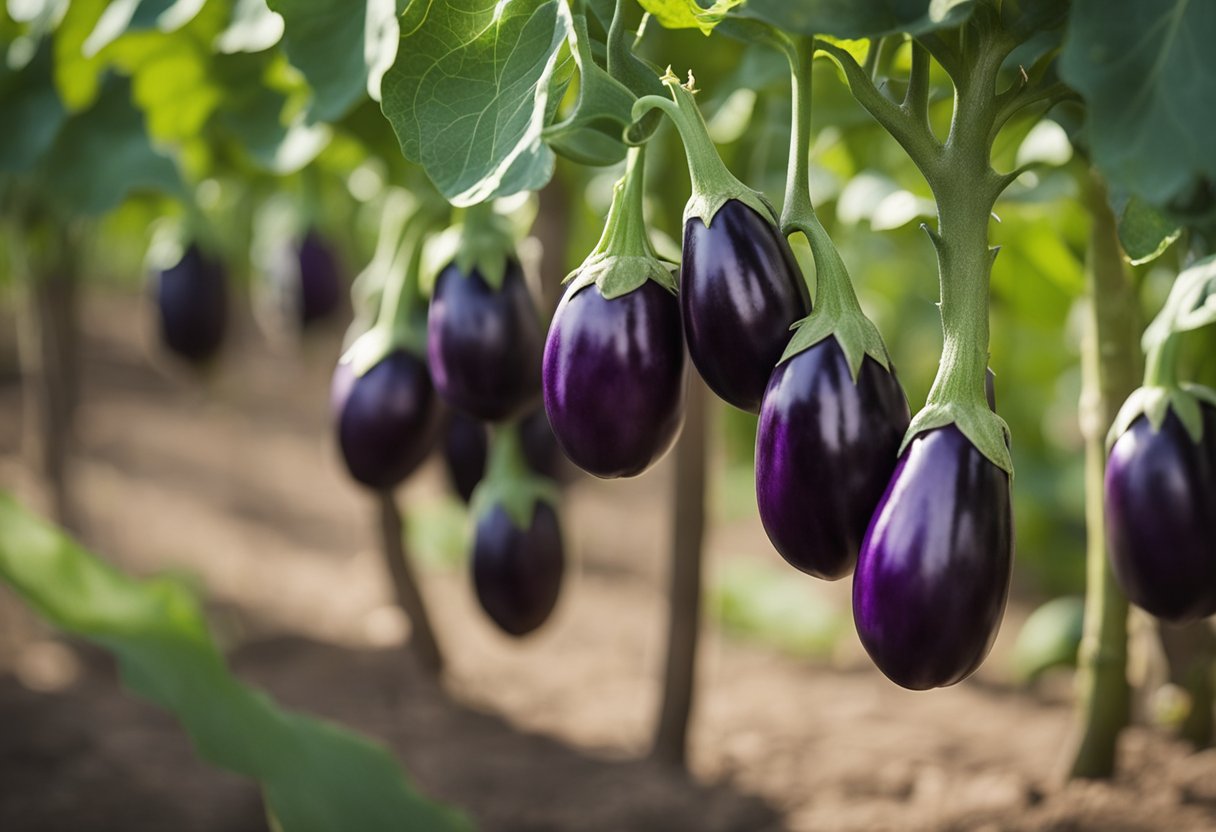
Storage Conditions
After harvesting eggplants, they should be stored in a cool and dry place to prevent them from going bad quickly. The ideal temperature range for storing eggplants is between 10°C to 13°C. At this temperature, eggplants can be stored for up to two weeks. However, if the temperature drops below 10°C, the eggplants can get damaged and develop chilling injury.
It is important to note that eggplants are very sensitive to ethylene gas, which is produced naturally by some fruits such as bananas and apples. Therefore, it is best to store eggplants away from these fruits to avoid premature ripening and spoilage.
Shelf Life
The shelf life of eggplants depends on several factors such as storage temperature, humidity, and handling. Typically, eggplants can last up to two weeks when stored in optimal conditions. However, if the eggplants are exposed to high humidity or moisture, they can quickly develop mold and rot.
It is recommended to inspect stored eggplants regularly for any signs of spoilage or damage. Any eggplants that show signs of spoilage should be discarded immediately to prevent the spread of mold to other eggplants.
Proper post-harvest handling is crucial to ensure the longevity and quality of eggplants. By storing eggplants in the right conditions and regularly inspecting them for spoilage, we can enjoy fresh and delicious eggplants for a longer period of time.
Pest and Disease Management
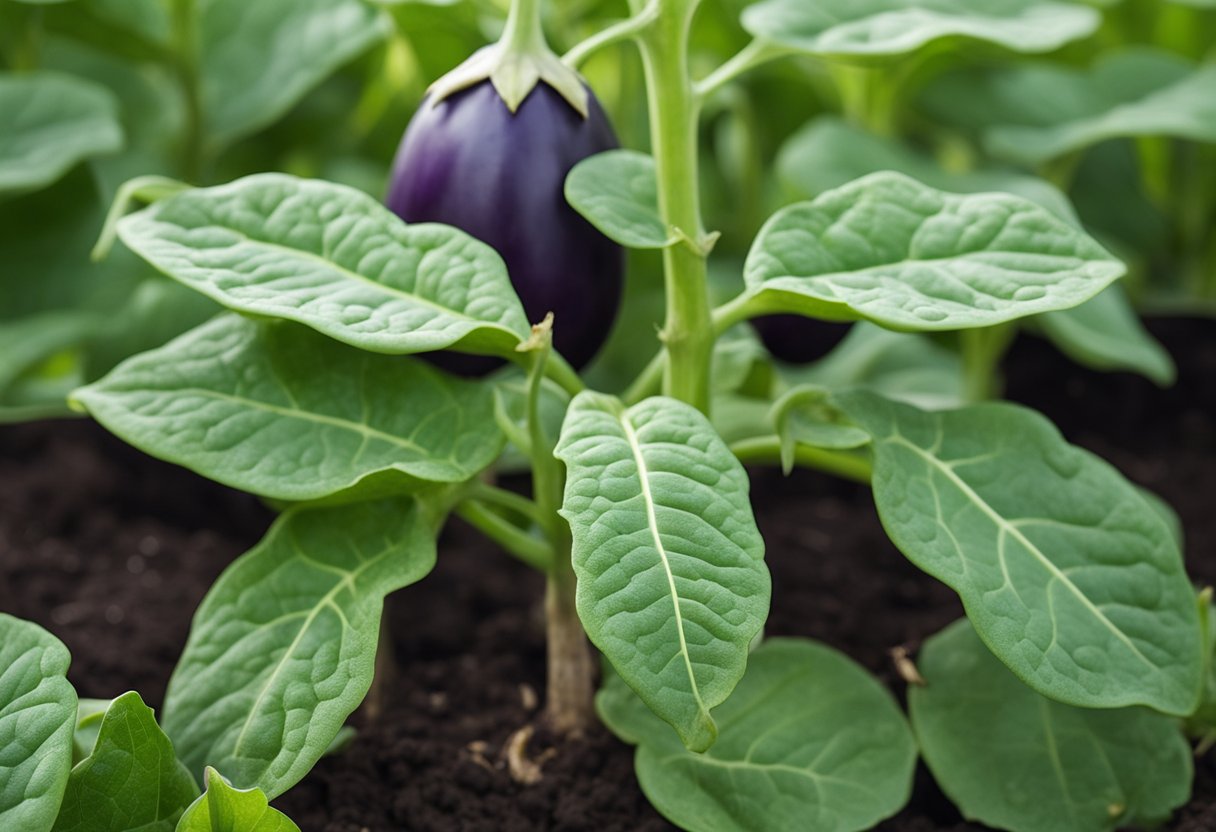
Common Pests
As eggplants are a favorite food of many pests, it is important to monitor them regularly for signs of infestation. Some of the most common pests that can affect eggplants include aphids, whiteflies, flea beetles, and spider mites.
Aphids and whiteflies are both sap-sucking insects that can cause significant damage to eggplant leaves and stems. They are primarily found on the undersides of the leaves and can be identified by the sticky waste known as honeydew that they secrete as they feed. To control these pests, I recommend using insecticidal soap or neem oil.
Flea beetles are another common pest that can cause small round holes in eggplant foliage early in the season. They are tiny black beetles that feed on leaves and can also attack seedlings of tomatoes, potatoes, peppers, radishes, and corn. To control these pests, I recommend using row covers or insecticidal dust.
Spider mites are another sap-sucking insect that can cause significant damage to eggplant leaves. They are often found on the undersides of the leaves and can be identified by the fine webbing they produce. To control these pests, I recommend using insecticidal soap or neem oil.
Disease Prevention
In addition to pests, eggplants are also susceptible to a variety of diseases, including verticillium wilt, bacterial wilt, and fusarium wilt. To prevent these diseases, it is important to practice good crop rotation and sanitation practices.
Crop rotation involves planting eggplants in a different location each year to prevent the buildup of soil-borne diseases. Sanitation practices involve removing any infected plant debris and disinfecting tools and equipment between uses to prevent the spread of disease.
In addition to these practices, it is also important to provide adequate air circulation and avoid overwatering, as wet conditions can promote the growth of fungal diseases. If you do notice any signs of disease, such as wilting or yellowing leaves, it is important to remove and dispose of the infected plants to prevent the spread of disease to healthy plants.
Growth Challenges
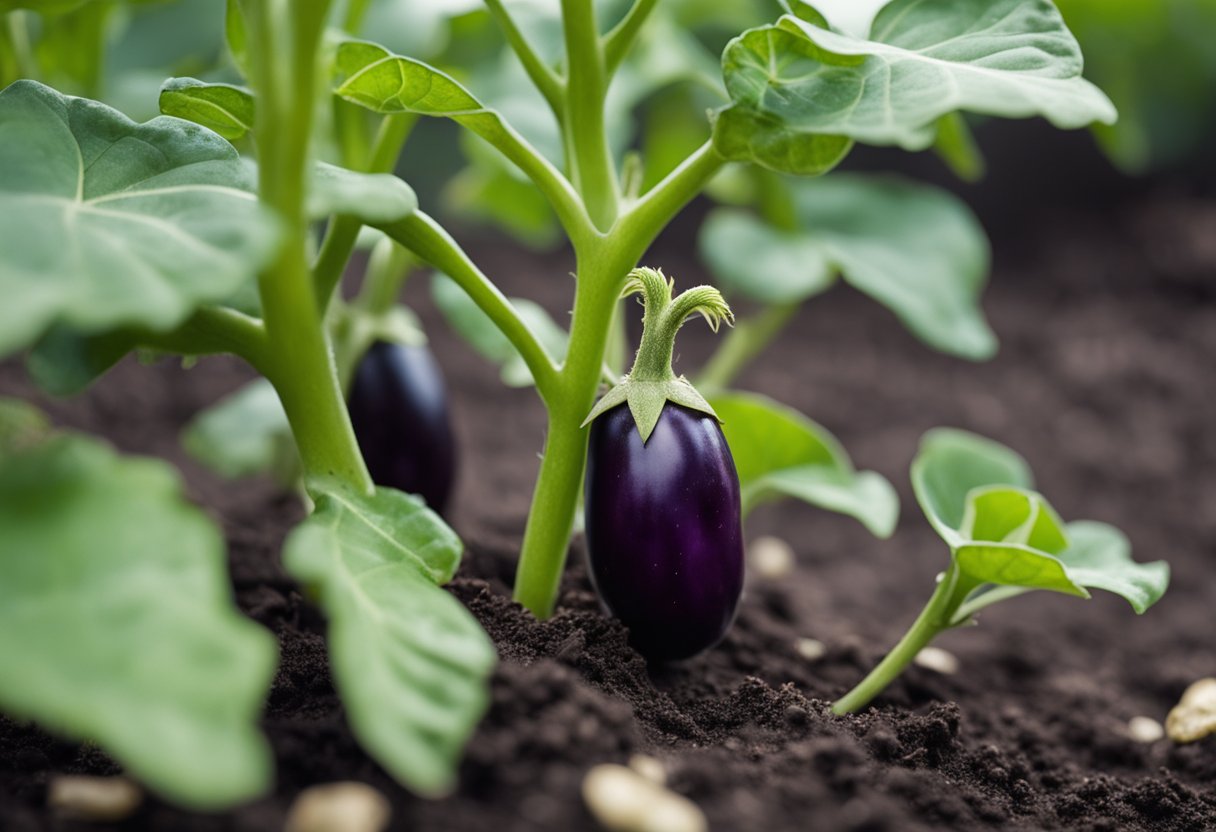
Growing eggplants can be challenging, as they are susceptible to various environmental stressors and nutrient deficiencies. As an experienced gardener, I have encountered several challenges when growing eggplants. Here are some of the most common growth challenges and how to address them.
Environmental Stressors
Eggplants are sensitive to extreme temperatures, both hot and cold. They require warm temperatures to thrive, with the ideal range being between 70°F and 85°F. If the temperature drops below 60°F, the growth of eggplants will slow down, and they may even stop growing altogether. On the other hand, if the temperature rises above 90°F, the plants may suffer from heat stress, which can cause wilting and leaf drop.
To prevent environmental stressors, it is essential to plant eggplants in the right location. Choose a site that receives full sun and has well-draining soil. You can also use mulch to keep the soil moist and cool during hot weather.
Nutrient Deficiencies
Eggplants require a balanced supply of nutrients to grow healthy and produce a bountiful harvest. However, they are prone to several nutrient deficiencies, including nitrogen, phosphorus, and potassium deficiencies.
Nitrogen deficiency can cause stunted growth and yellowing of leaves. To address this, you can apply a nitrogen-rich fertilizer or use compost to improve the soil’s nitrogen content.
Phosphorus deficiency can cause poor root development and slow growth. To address this, you can apply a phosphorus-rich fertilizer or use bone meal to boost the soil’s phosphorus content.
Potassium deficiency can cause weak stems and poor fruit development. To address this, you can apply a potassium-rich fertilizer or use wood ash to increase the soil’s potassium content.
Eggplant growth stages can be challenging due to environmental stressors and nutrient deficiencies. However, with proper care and attention, you can overcome these challenges and grow healthy and productive eggplants.
Also Read | Zucchini Plant Growth Stages – Understanding the Life Cycle
FAQs – Eggplant Growth Stages
What are the optimal companion plants for eggplant cultivation?
As a companion plant, eggplant grows well with beans, peas, peppers, and tomatoes. These plants provide the necessary nutrients that eggplants need to thrive. Additionally, eggplants are not compatible with fennel, kohlrabi, and potatoes, so it is best to avoid planting them together.
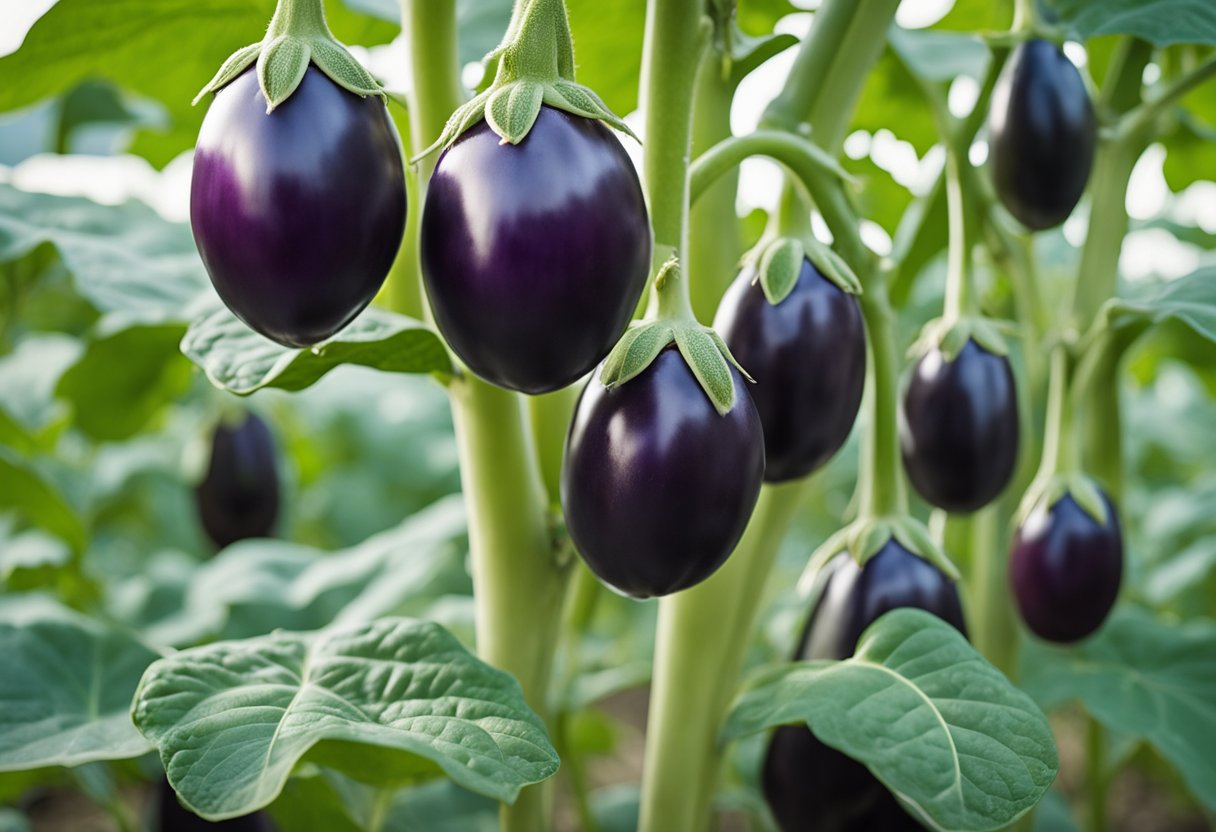
What is the typical duration for eggplant to mature from seed?
Eggplants typically mature from seed in about 70 to 80 days. However, the duration may vary depending on the variety of eggplant, the growing conditions, and the climate.
How many fruits can one expect from a single eggplant plant?
The number of fruits that one can expect from a single eggplant plant depends on the variety of eggplant, growing conditions, and the care given to the plant. However, on average, one can expect to harvest around 4 to 6 fruits per plant.
What is the average time from eggplant flowering to fruit development?
After the eggplant flowers, it takes around 10 to 14 days for the fruit to develop. However, the duration may vary depending on the variety of eggplant, the growing conditions, and the climate.
What are the common challenges when growing eggplant and how to overcome them?
Some common challenges when growing eggplant include pests, diseases, and environmental factors such as temperature and humidity. To overcome these challenges, it is important to practice good plant hygiene, use organic pest control methods, and provide the necessary growing conditions such as well-draining soil, adequate water, and sunlight.
How long can an eggplant plant remain productive?
Eggplant plants can remain productive for up to 3 to 4 months, depending on the variety, growing conditions, and care given to the plant. It is important to harvest the fruits regularly to encourage the plant to continue producing.